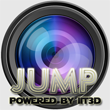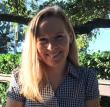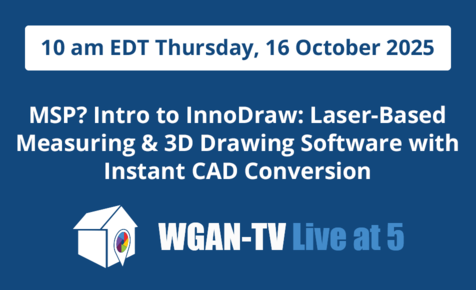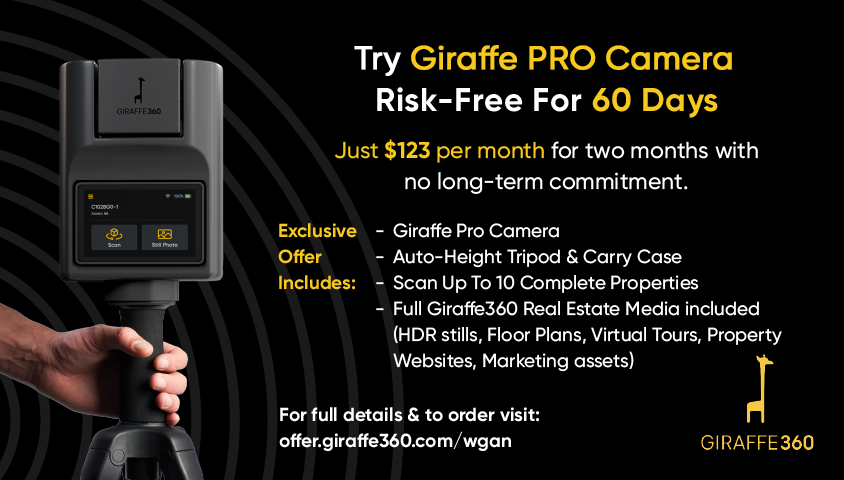How to scan to improve SQ FT accuracy?6738
Pages:
1
 WGAN Forum WGAN ForumFounder & WGAN-TV Podcast Host Atlanta, Georgia |
DanSmigrod private msg quote post Address this user | |
| Hi All, A WGAN Forum Member emailed me today (Monday, 9 April 2018): "Any idea how to capture spaces so that the square footage is within 5% of actual sq ft? Not sure if there are techniques [that we] can add to the flow or if measuring in the dashboard is more accurate. Our models are normally 100-200 sq ft off." While over-scanning a space can improve the Matterport dollhouse view and give you options in Matterport Workshop, I do not know if denser scan data translates to more accurate scans. And, I do not know if using Workshop to drop points to do floor plans is more accurate. Do you know the answer? I thought Matterport claimed that the data is 99 percent accurate. Do Matterport created 2D Floor plans have the same accuracy as the Matterport object file (.obj)? Best, Dan |
||
| Post 1 • IP flag post | ||

Frisco, Texas |
Metroplex360 private msg quote post Address this user | |
| Anecdotally, quite a few people have expressed their delight in the accuracy of Matterport's 3D Models. Of course, 3D Models are not capturing the entire surface area of the slab (which is how SQFT is counted in the MLS). Overscanning a space has the potential to improve the dollhouse view to add clarity to objects. Rather than overscanning, I'd like to consider it -- "Not underscanning". I like to scan so that each of my tours have a consistent feel and that the viewer is able to freely move in a consistent manner. I think that underscanning can cause the tour to lose that feel of 'being there'. Here are my scanning guidelines with pictures - Scan the center and each corner of each room. :-: - Scan either side of each doorjamb including closets. -|- - For LARGE rooms, scan as if it's two connected rooms. :-:-: - For Kitchens with small islands scan each corner of the island :: - For Kitchens with long islands scan each corner of the island and a midpoint ::: - For narrow spaces such as utility rooms, walk in closets or galley kitchens, scan at either side. One of these scans will be the inside of the doorjamb. -|- - - For straight stairways, scan every 4 steps. For curved stairways, scan every 3 steps. - Keep the camera closer to the wall if possible to reduce stitching errors with wrought iron railings. - Include garages unless permission is denied. If undesirable to show, disable scans in workshop. - Mark all windows along the inside edge and extend the marker by a small part. - Be sure to use mirror markers. - Trim is unnecessary. - Use 360 Views for outside areas (Going outside compromises a dollhouse and isn't worth it unless you are mr. super creative pants or Matterport solves this.) |
||
| Post 2 • IP flag post | ||
 WGAN WGAN3rd Party Service Member Beijing |
JuMP private msg quote post Address this user | |
| To answer the question we must have an accurate tool to measure the result at first. JuMP team is working on the Sq.Ft. measurement project more than one year. We provide the free tools JuMP-ME v1.0 one year ago, which can measure any OBJ result from Matterport showcase; https://www.wegetaroundnetwork.com/topic/4298/page/1/new-free-square-footage-measure-app-online/ And we developed JuMP-ME v2.0 to provide a GUI to make more accurate result of Sq.Ft. and Showcase report in PDF format. Please refer below topic about the accuracy: https://www.wegetaroundnetwork.com/topic/6283/page/1/matterpak-no-more-free-obj---sq-footage/#13 Just two weeks ago we released our most convenient tool JuMP Tools extension for Sq.Ft to all Matterport user for free. https://www.wegetaroundnetwork.com/topic/6661/page/1/most-convenient-tool-for-sqftsqm-by-now/ The measurment technology in all our Sq.Ft. tools is same, they provided the same accuracy. If Matterport can confirm the result of their showcase is 99%. We believe you can get 95% result with our "JuMP-ME v1.0" and "JuMP Tools extension". If you use our JuMP-ME v2.0 and use GUI to fill holes and remove unwanted area, you can get more accurate result for sure. Generally the difference from our Sq.Ft. tools's result to the real area is the thickness of the wall and the uncovered area in the room. That will be shown as some holes in the result when calculate Sq.Ft., holes won't be calculated. All holes can only be adjusted by manpower today. JuMP-ME v2.0 provide the GUI tools for users to do the adjustment by some clicks. |
||
| Post 3 • IP flag post | ||
|
|
ron0987 private msg quote post Address this user | |
| I can agree with everything posted so far, where I am suspect of any calculations are on the processing side see where Matterport is putting several scan together and there has been atleast one paper written on the chaining and or merging of scan together that can have an error in one scan and or the farther you get from the base scan the error increases. This error was not great but again if there is a chance for an error I am reluctant to go there. While using a laser scanner to scan property I was able to check the error factor on each scan to see if it was causing an error in SQFT calculation but we can not do that with Matterport, we do not control the processing. The test I referred to was Matterport Pro 1 against a Leica scanner. So with out a scale placed in each room or taking one wall measurements in each room how can you be sure and it also depends on the accuracy you are looking for. | ||
| Post 4 • IP flag post | ||
 Blue-Sketch Blue-SketchFounder New Orleans, LA |
PetraSoderling private msg quote post Address this user | |
| @ron0987 You're maybe referring to the issue with triangulation technology, as explained in this thread https://www.wegetaroundnetwork.com/topic/3438/page/1/square-footage-dispute---help/#23 "Matterport camera uses structured light (random pattern projected by IR laser projector and viewed by IR camera) and that is a type of triangulation technology. The IR camera measures angle to each dot in the random pattern and uses the distance between the IR camera and the IR projector (camera baseline) to solve the triangle and compute the range to the target. When the math is done for such a measurement set up, it will follow that the (absolute, in inches) error in range measurement grows as square of the measured distance." Because of this, the larger the space the bigger the potential error. Having said this I agree with @Metroplex360 I think Matterport is currently one of the easiest ways to get area surface data of a residential house. We (Blue-Sketch) have done well over 3000 floor plans out of Matterport models and very rarely do they come back because of accuracy concerns. If there's discrepancy it's usually a hidden closet or wrong thickness of exterior wall. Old appraisals or city documents are not always reliable, either. Matterport claims their "measurements are generally accurate to within 1% of reality", but that "Measurements provided on floor plans (linear measurements between opposing walls) are generally accurate to within 0 to 2% of reality". They don't say anything about accuracy of the square footage estimate. https://support.matterport.com/hc/en-us/articles/218802457-Schematic-Floor-Plan-FAQ- For the original member who asked the question: Are you comparing Exterior measurement in the appraisal to the Interior measurement given by Matterport. That may be the 5% error right there. According to ANSI requirements in North America when you cannot measure the Exterior you can measure the interior and add 6" to each exterior wall. |
||
| Post 5 • IP flag post | ||
 iGUIDE iGUIDEFounder/CEO Kitchener, Canada |
Alex_iGuide private msg quote post Address this user | |
| @PetraSoderling Thanks for bringing up the old thread. To expand on it... Since the error grows quadratically with distance away from the camera when using Matterport camera technology, an error of 1% at 3m distance (3cm), for example, will guarantee that the error at 6m distance will be 2% or 12cm when using the same scan data. So, the way to control this run-away error is to keep distance between camera positions small. This means having to make more scans per floor and longer time onsite, but that is the price to pay for improved results. The closer the scans, the smaller the error. iGuide technology, in contrast, uses time-of-flight principle for measuring distances, where the laser scanner error is constant with distance (4cm or less) up to max measurement range (10m typically, but can be up to 20m under good conditions). As far as how square footage error is affected: for relatively small distance measurement errors, the square footage error is about double of the distance measurement error, i.e. for 2% distance measurement error, the square footage error will be about 4% (1.02 x 1.02 = 1.0404 or 0.98 x 0.98 = 0.9604). |
||
| Post 6 • IP flag post | ||
Pages:
1This topic is archived. Start new topic?

















